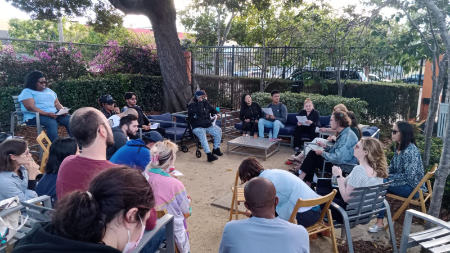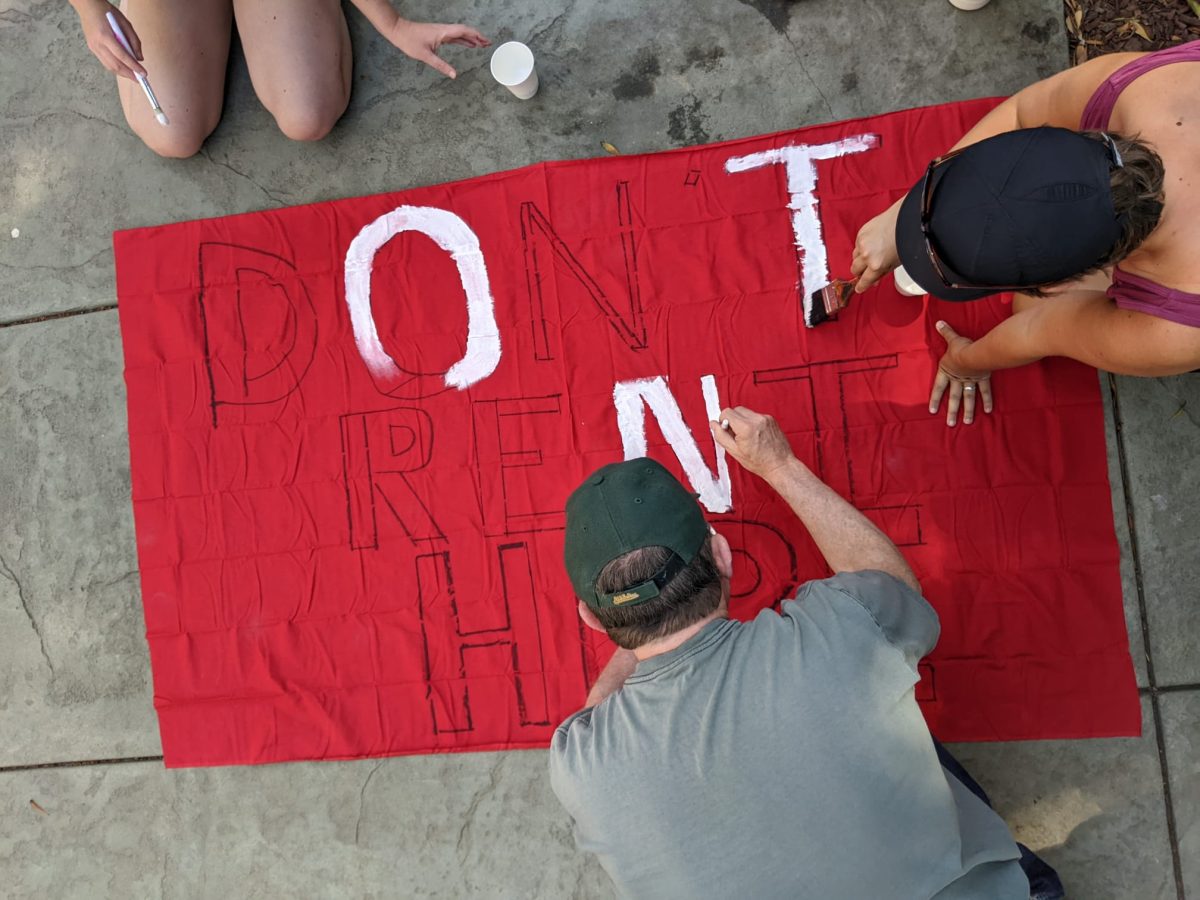In the last six months of 2022, the Renew on Merritt Tenant Council formed, went on rent strike, and weathered retaliatory harassment by their landlord. As ever in organizing, it is a struggle to convey the breadth of collective effort, or the myriad conversations which in each specificity seem to contain the whole story. This short piece cannot hope to hold it all, but I write to “think out loud” and share its timeline as part of a collective reflection and in the hopes it may prove useful to the reader.
A tenant contacted TANC on June 14th, having already organized and held a building-wide meeting attended by 80 people (about a quarter of the building). Both elevators in this 50 year old, 18-story building had been out for an entire weekend — this after days without hot water, months of mice, and years of unmaintained units. Kennedy Wilson, a real estate investment firm, had bought the building in 2012, painted some orange stripes on the outside, put gray “wood” flooring in unoccupied units, and dropped a six story banner advertising its new luxury apartments.
Some tenants began to withhold rent immediately, or had already been doing so, but there was not the collective identity to bridge these actions. Ali, the tenant who contacted and joined TANC, had already started Facebook and WhatsApp groups and sent around surveys by the time she came to a June 20th meeting of TANC’s Central Oakland local. For the rest of the month several local members met with her and other tenants to discuss tactics and craft a demand letter.

On July 5th the TANC local and the RoM Tenant Council held a combination meeting/cookout to introduce the two organizations and get signatures for the demand letter (picture above). Management’s only response to the letter was to push apartment inspections on all units that had mentioned specific grievances. Weeks later they sent back an itemized argument trivializing each of the demands and offering no date for negotiation.
Frustrated with the loss of momentum, at its August 2nd meeting the council approved going on rent strike in September and established a Rent Strike Committee so that the planning work could happen separately from preparations for negotiation. Hearing from those tenants already withholding rent encouraged many others. The committee designed several flyers, printed them at TANC’s printshop, and held an art build to paint cloth banners.
On August 22nd, visiting employees of the firm that would buy the building several days later asked on-site management to tell a tenant hanging a DON’T PAY RENT banner that it violated city law — she took it down and gave it to her neighbor a floor below, who immediately hung it back up. At this point 18 units were confirmed to be joining the rent strike. There were some questions about whether the new ownership would delay it, either tactically or because they deserved some grace period, but most tenants felt that if they were buying it they were buying all the problems along with it. And as it turned out, while the management transfer lost many records, unpaid rents were transferred seamlessly to the new system.
On August 30th the council and TANC held a rent strike rally. Forty units were confirmed to be on strike, and there was rally coverage by a local news channel and ongoing coverage by a local paper.
It wasn’t until the last week of September that management responded, insisting on inspecting every unit in the building on a fixed schedule with less than 24 hours notice. Many tenants put up notices on their door saying they did not consent, but employees of the management company, accompanied by armed security, forced their way into units anyway. After an argument between a tenant and a manager about unpaid rent, the manager called the police and had that tenant arrested. TANC members did copwatch and jail support.
The council’s shock from September’s violence turned into a flurry of October action, including filing complaints with the city and many tenants joining a lawsuit against the company, that have yet to clearly result in a lessening of pressure. Though charges were dropped against the tenant arrested in September, because he was on probation and the arrest itself was a violation there was more than a month of court hearings before he was eventually given weeks of house arrest. During those proceedings, management filed for a restraining order against him, but did not show up to court to argue for it and so it was not granted. Nonetheless in December they filed for a so-called “nuisance eviction”, in addition to threatening at least two older women with eviction.

